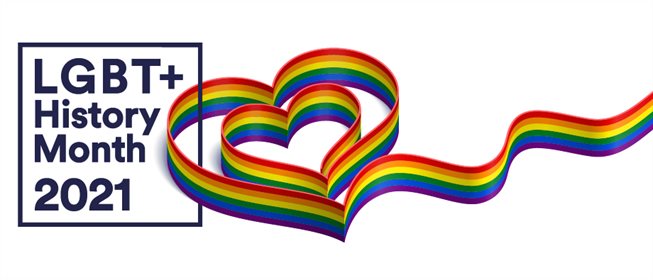
February is LGBT History Month. For the first and last weeks of the month of February we will once again be displaying the rainbow flag at our University Park and Sutton Bonington campuses. We will also, for the first time, and after consultation with our LGBT students and staff, be recognising LGBT History Month, through the digital representation of our University logo.
Whilst we aim to ensure that our commitment to Equality, Diversity and Inclusion is something that we act upon throughout the year, the different months, with their specific focus help us to direct our attention and learning to the specific challenges encountered by groups with protected characteristics.
LGBT History month is a poignant time, which highlights and remembers the systemic oppression and abuse experienced by those from the LGBTQ+ community, both in historical times, and in present day.
This year, the programme of events put together by the LGBT history month organising committee follows the national theme of ‘Body, Mind, Spirit’ and includes an incredibly diverse set of events, from sessions particularly aiming to provide support and engagement for our LGBTQ+ community, to those which can help us all learn about how to be an ally, or an understanding of the particular challenges still faced by LGBTQ+ individuals in academia.
I’ve learned a lot from attending the University LGBTQ+ events in recent years. I’ve heard about the difficult experiences that some of our staff and students have had. I’ve also learned about the diversity of views and sometimes very difficult tensions that emerge both within the LGBTQ+ community, and in aligning LGBTQ+ inclusion with other areas of inclusion and diversity, which at points may apparently be in conflict with each other. Holding safe, respectful, supportive conversations which help us to understand these diverse viewpoints is important, and I have been very pleased to see these challenging topics discussed at previous LGBT history month events.
Alongside these recognition months, our University chaplaincy also provides a strong focus for our diverse religious communities. The University chaplaincy has a strong approach of being inclusive to those from all faiths, and no faith, and they have adapted in impressively innovative ways to engage with our different religious groups and festivals since lockdown has begun. I have been very honoured to be invited to share in events including a virtual celebration of Eid, the Christmas carol service, and earlier this week, a service to recognise Holocaust Memorial Day. In this service we reflected on the horrors of genocides including the Holocaust and Nazi Persecution, targeting Jews, Roma and Sinti people, disabled people, gap people, and political opponents. We also remembered the extremist regime of Pol Pot in Cambodia, the murder of Tutsis and Hutus in Rwanda, the murder of 8000 Muslim men and boys in the town of Srebrenica, and the deaths of black Africans in the region of Darfur.
I’ve realised the privilege that I hold, as a heterosexual woman, and the importance of all of us having the courage to support those from under-represented groups. The example that really brought this home to me was a comment from a member of the audience at one of the LGBT history month events a couple of years ago. A colleague mentioned that they did not feel that they were able to display a photo of their partner on their desk, and they did not want to make colleagues or students feel uncomfortable. I realised that I had not given a moment’s thought to this – in the same way that I have never needed to ‘come out’ as heterosexual.
So, alongside this context of persecution, challenging discourse, and history, why is it important that we display the rainbow flag and its symbol? The flag has had various designs and forms over the years, and its colours represent concepts including sexuality, life, healing, sunlight, nature, magic, serenity and spirit. In recent years, and reflected in the designs of the rainbow crossings that now adorn the roads on three of our University campuses, a brown and black stripe has been added, reminding us of the intersectionality of race, ethnicity, sexual orientation and gender identity. For the LGBTQ+ community, the flag has emerged as an important symbol of inclusion, identity and celebration.
When I was discussing this blog with one of my friends, they commented to me that the flag reminds them of “joyful identity and inclusion in a fragile world”. They also described the “gut punch” they felt as they walked past other buildings which proudly displayed the rainbow flag, and yet, when they arrived at their own workplace, did not see a flag on that building.
Different recognition months and religious festivals have evolved different tokens and traditions of recognition, and in our consultation in planning these events we consider our approaches carefully, being cautious not to be drawn into ‘performative’ acts which are not backed up by action. And I am sure that we do not always get this right. But I am also certain that the only way we can deliver real change, and truly meet our commitment that all of our staff and students should feel safe and supported in all that they do as they study and work at the University of Nottingham, is to listen, to learn, and to have the confidence to act.
Even though, like many of you, I am currently working at home at the moment, next week, I’m going to try to divert my exercise walk through University Park campus to take a look at the flag. I expect, that, like in previous years, seeing the flag will make me feel pride at our commitment to inclusion, joy and love at the beauty of the rainbow colours, and cause me to reflect on how much work there is still to do.
Professor Sarah Sharples
Pro-Vice Chancellor for Equality, Diversity & Inclusion and People.
1 February 2021